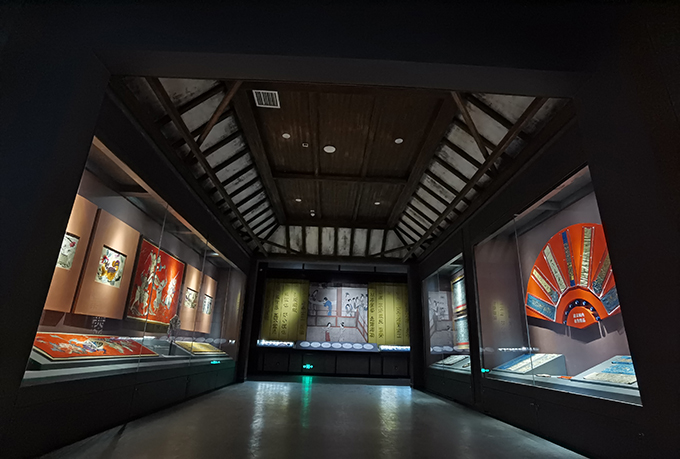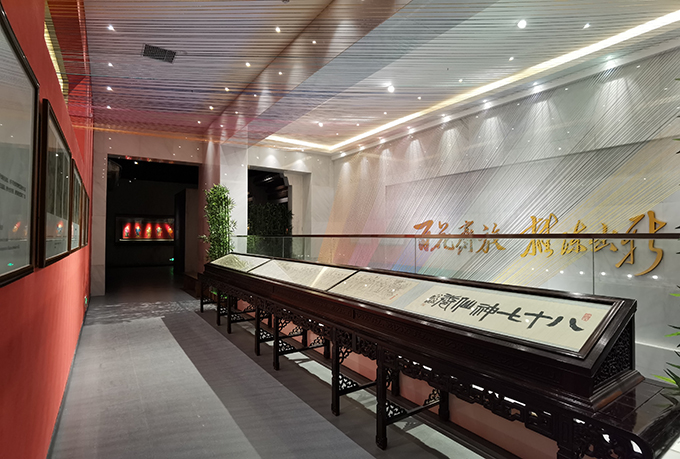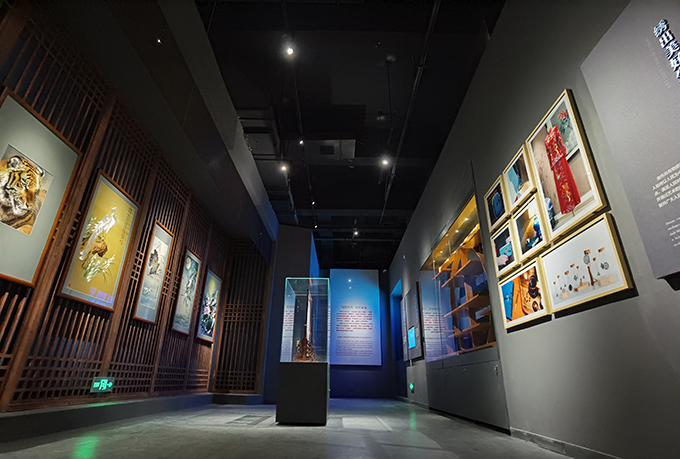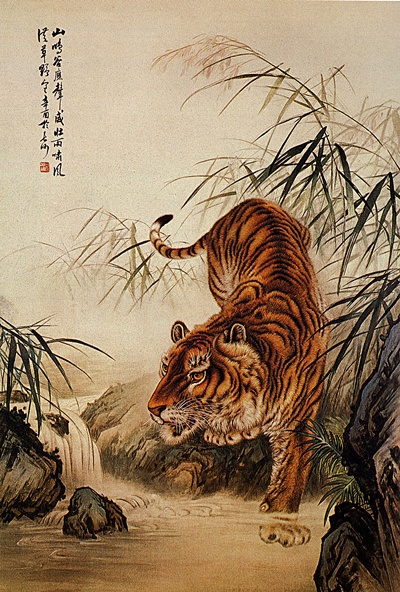Hunan Embroidery Museum
2022-05-25

With the theme of “the beauty of Hunan in stitchwork”, the new museum, which was upgraded in 2020, highlights the important contribution of Hunan embroidery in education, science and technology and culture, and reflects the inheritance and development of historical culture.
With an area of 2,000 square meters and collections of more than 4,000 pieces, the new museum is divided into four theme exhibition halls to reflect the evolution of Hunan embroidery craft, the superb skills of previous artists, and the innovation and development of Hunan embroidery today, presenting the past and present of Hunan embroidery, the masterpieces of artists and the new trends of the times.
Four theme exhibition halls:
The origin of Hunan embroidery

Hunan embroidery inherits the charm of Chu-Han embroidery, and is deeply rooted in the vast fertile soil of folk art. After absorbing the artistic characteristics of embroidery from other ethnic groups, Hunan folk embroidery emerged with a distinct regional characteristics.
The rising of Hunan embroidery
The rising of Hunan embroidery

From 1910 to 1935, Hunan embroidery appeared frequently in domestic and foreign fairs and won many awards, by which its products were sold at home and abroad. With exquisite skills, distinctive style and complete categories, Hunan embroidery reached its first peak of development as evidence by its success in both art and business. Hunan embroidery is honored as one of China's "Four Most Famous Embroideries" along with Suzhou, Sichuan and Guangdong embroidery.
The zenith of Hunan embroidery

After the founding of the People’s Republic of China, Hunan Embroidery took on a new look. Under the support and protection of the Communist Party of China and the government, the artists of Hunan embroidery have restored, sorted out and developed the traditional skills of Hunan embroidery. Many new embroidery products and techniques have been created. So far, Hunan embroidery has been displayed in all previous China arts & crafts expo as well as the China Import and Export Fair, and has been exhibited in more than 50 countries, with high reputation at home and abroad and its products sold well all over the world.
Hunan embroidery has won the gold award of the Hundred Flowers of Chinese Arts and Crafts for many times since it was held by the country in 1981, where a large number of fine works emerged and stunned the world.
The prospect of Hunan embroidery

In the rapidly changing internet era, the inheritors who were born after 1990s have injected new vitality into the ancient Hunan embroidery. The new generation of inheritors boost the cultural confidence and actively integrate Hunan embroidery into modern life by introducing their stitchwork to the world: Hunan embroidery works have been displayed on Shanghai Expo and even in UN headquarters, traveled in space aboard Shenzhou spacecraft, and first auctioned by Poly Auction in Hong Kong.
Collections:
Flower and bird screen

This screen was displayed when Dr. Sun Yat-sen and Soong Ching Ling were married. On the antique satin, wisteria, peony, chrysanthemum and plum are embroidered with poems in the form of traditional Chinese claborate-style painting, which boasts the ideological connotation and artistic characteristics of traditional literati painting. Each picture shows two birds symbolizing love and harmony between a new couple. It is a representative work of traditional Hunan embroidery.
A tiger drinking water

This piece of embroidery mainly adopts the unique stitch skills of Hunan embroidery. The embroidered tiger hair is really true to life and colorful with various silk threads. The eyes of tiger, the most vivid part, employs whirling stitch, a typical stitch skill of Hunan embroidery with dozens of silk threads by which the staring eyes seem to move with the viewer. This embroidery work won the gold award of the Hundred Flowers of Chinese Arts and Crafts in 1982, and was selected as the national treasures of arts and crafts in 1985 and permanently preserved in the National Arts and Crafts Museum. It is a classic work reflecting the inheritance, development and zenith of Hunan embroidery.


